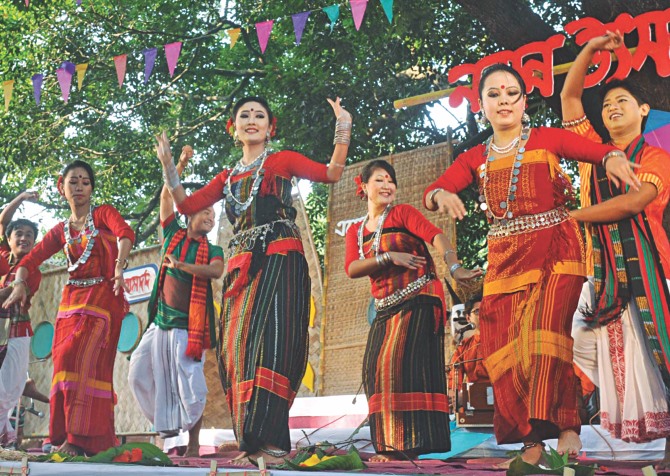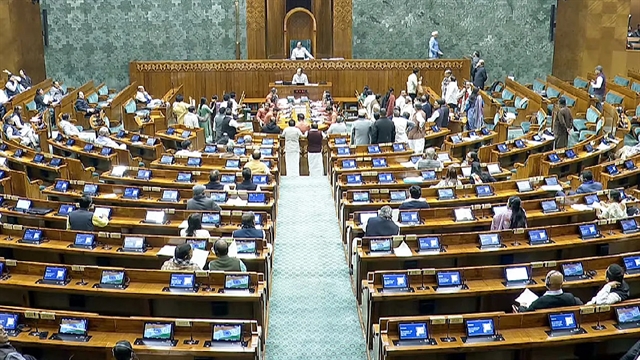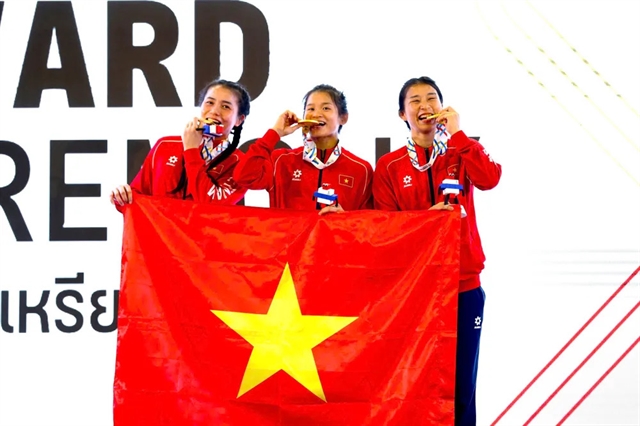 Life & Style
Life & Style
.jpg)
On the occasion of the 46 Anniversary of Independence and National Day of Bangladesh on March 26, Việt Nam News presents a short history of the nation’s deep cultural heritage, written by Ambassador of Bangladesh Mohammad Shahab Ullah.
 |
| Jewel of a nation: New rice festival dance in Bangladesh. — Photo courtesy of the embassy of Bangladesh |
Art, Culture and History of Bangladesh
Bangladesh is unique in many ways. After emerging in 1971, the country draws its boundaries around the ancient and historic region of Bengal in the Eastern part of the Indian subcontinent. The country is overcoming quagmires and is progressing with tangible pace. The history of the region in closely interwoven with the history of Bengal and that of India.
The cultural heritage of Bangladesh can be seen through various forms like small artifacts of prehistoric people of remote past as well as gigantic monuments like monasteries of historical eras. We find the vestiges of the Neolithic hunter-gatherers, Hindus, Buddhists, Muslims and Christians. Also, the country has a number of small ethnic communities, and they have their own cultures and heritages. This multifarious heritage undoubtedly testifies to the richness of our colorful history.
These cultural remains spread all over the country, but its northern and eastern portions are rich in the earliest evidence. The recently-formed alluvial deposition of the southern part possesses comparatively little evidence of ancient culture.
From the historical age, the earliest remains comes from Mahasthan in Bogra district and Wari-Bateshar in Narshingdi district. The Extensive ruins of Mahasthangarh represent Pundranagar, was established by the Mauryans in the 3rd century B.C.E., over the earlier remains of 4th/5th century B.C.E. The city flourished in the succeeding periods of the Guptas, the Senas and the Muslims. The twin village Wari-Batashar in the district of Narsingdi has yielded artifacts of petrified wood from the prehistoric era and a large variety of cultural objects including water reservoirs, small rooms, Northern Black Polished Wares, punched marked silver coins, iron glums and weapons and semi-precious stone beads of early historic period.
The most imposing Buddhist monument is the gigantic monastery at Paharpur, known as SompurMahavihara, in Naogaon district. The second largest single monastery south of the Himalayas was erected by Dharmapala in the 8th century C.E. A series of similar but less extensive monasteries and stupas have been exposed at SalbanVihara, AnandaVihara, Rupban Mura,Itakhola Mura, Charpatra Mura and the Tri-ratnaStupas at kotila Mura in the Lalmai-Mainamati hill range in Comilla, at Bihar and Vasu Bihar near Mahasthan and at Sitakot in Dinajpur, and Harish Chandra Rajar Bari at Savar near Dhaka.
The remains of the Muslim period may be divided into two distinct phases: the pre-Mughal and the Mughal. Notable among them are a series of massively built mosques and tombs within the old city Bagerhat, in the South, founded by a saint ruler in the 15th century C.E. The city plan centers around a magnificently built 77 domed mosques, popularly known as the ‘Shait-Gumbad Masjid’ which is the largest of its kind.
Among 448 sites enlisted as national heritage, the ruins of the Buddhist Vihara at Paharpur and Historic Mosque City of Bagerhat have been inscribed on the World Heritage list by UNESCO. In addition, sites like HaludVihara, JaggadalaVihara, Lalbagh Fort, Mahasthanagarh and its Environs, The Lalmai-Mainamati Group of Monuments are included in the tentative list of the World Heritage. Bangladesh is going to propose for inclusion of Bangladesh National Parliament Bhaban in the tentative list of cultural heritage sites.
The earliest available specimen of Bengali literature is about a thousand years old. During the mediaeval period, Bengali Literature developed considerably with the patronage of Muslim rulers. The era of omdern Bengali Literature began in the late nineteenth century Rabindranath Tagore, the Nobel Laureate is a vital part of Bangalee culture. KaziNazrul Islam, Michael MadhusudanDatta. Sarat Chandra Chattopadhaya, Bankim Chandra Chattopadhaya, Mir MosharrafHossain and Kazi Abdul Wadud are the pioneers of modern Bengali Literature.
Festivals and celebrations have always played a significant role in the life of the citizens of this country. They derive from them a great amount of joy, entertainment and colorful life. While most of the festivals have sprung from religious rituals, the fairs have their roots in the very heart of the people, irrespective of religion, caste or creed. PohelaBoishakh, Victory Day, 21st February, the Language Martyr Day and International Mother Language Day, Eid-e-Miladunnabi, Eidul-Fitr, Eidul-Adha, Muharram, Durga Puja, Christmasand Rabindra and NazrulJayanti - are observed throughout the country.
The music and dance styles of Bangladesh are classical, folk, and modern. The folk and tribal music and dance forms of Bangladesh are of indigenous origin and rooted to the soil of Bangladesh. Bangladesh has developed its own distinct dancing styles. Bangladesh has a rich tradition of folk songs, with lyrics rooted into vibrant tradition and spirituality, mysticism and devotion. Most prevalent of folk songs and music traditions include Bhatiali, Baul, Marfati, Murshidi, and Bhawaiya. Lyricists like Lalon Shah, Hason Raja, KangalHarinath, Romesh Shill, Abbas Uddin, and many unknown anonymous lyricists have enriched the tradition of folk songs of Bangladesh. — VNS
.jpg)



